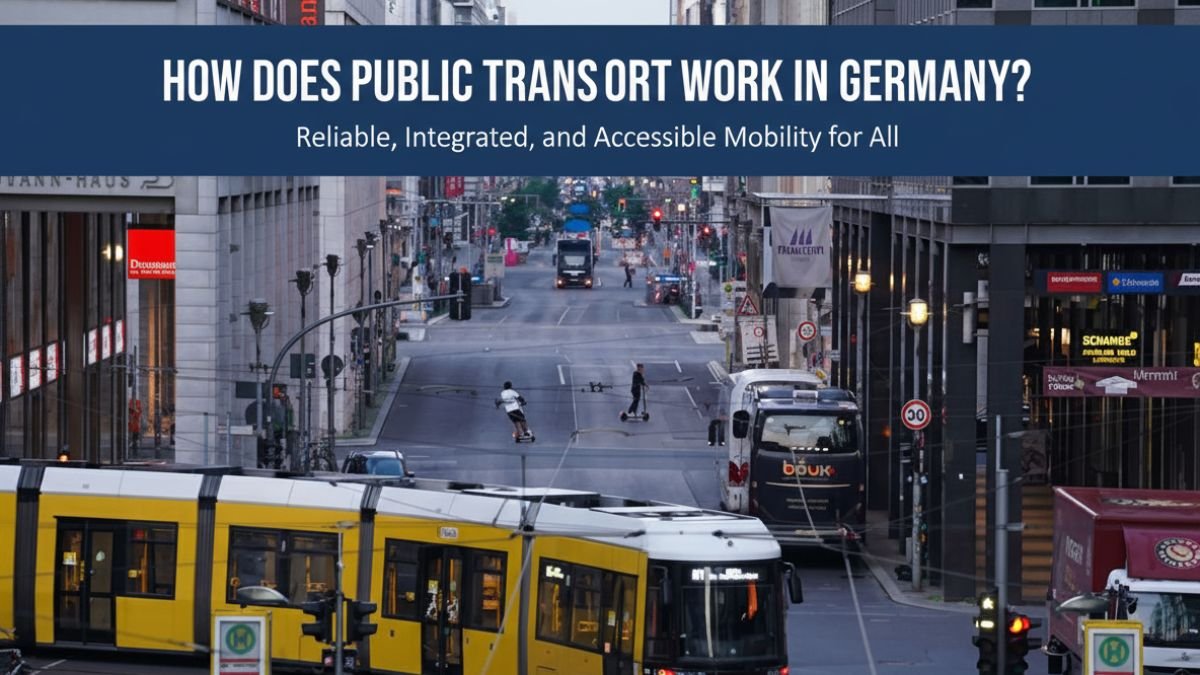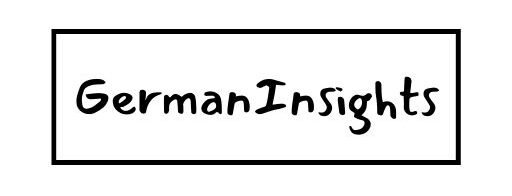A Beginner’s Guide to German Public Transport: U-Bahn, S-Bahn, Trams & Buses

In Germany, the public transport system is known for being efficient, reliable, and well-integrated, with multiple modes of transport operating on unified ticketing systems within regional networks. For travel across the country, Deutsche Bahn (DB) offers a variety of regional and high-speed long-distance trains.
Local and regional transport
German cities and their surrounding areas use an integrated public transport system, which means a single ticket can be used for different types of transport. These systems are typically organized by a regional transport association, such as the BVG in Berlin or the RMV in Frankfurt.
Common modes of transport include
- S-Bahn (urban rail): Commuter trains that connect city centers with suburbs and surrounding towns.
- U-Bahn (subway): A rapid transit system, operating mostly underground in central areas of larger cities like Berlin and Munich.
- Tram (Straßenbahn): Street-level trams and light rail that run on dedicated tracks and are faster than buses.
- Bus: Provides comprehensive coverage, especially in smaller towns and for late-night services in major cities.
- Stadtbahn: A light rail hybrid system that functions as a subway in city centers and a tram outside of them, used in cities like Cologne and Stuttgart.
Long-distance train travel
For travel between major cities and across the country, Germany has an extensive railway network operated by Deutsche Bahn (DB).
- ICE (Intercity-Express): High-speed trains that offer the fastest connections between Germany’s major cities and often include international routes.
- IC/EC (Intercity/Eurocity): Slower than ICE trains but still provide long-distance connections. EC trains also cross into other European countries.
- RE/RB (Regional-Express/Regionalbahn): Regional trains that serve local communities and are included in the Deutschland-Ticket, but are not as fast as long-distance trains.
Ticketing and fares
Navigating the fare system requires understanding the ticket types and validation process.
- Deutschland-Ticket: Introduced in 2023, this monthly subscription costs €58 (as of 2025) and allows unlimited travel on all local and regional public transport throughout Germany. It is not valid on long-distance trains (IC, EC, ICE).
- Zone-based pricing: For local tickets, the fare is determined by the number of travel zones (or Waben) your journey crosses. Maps of these zones are available at stations.
- Ticket types: You can purchase single tickets, day passes (Tageskarte), weekly passes (Wochenkarte), and monthly passes (Monatkarte). Day passes for groups of up to five people are also available and offer good value.
- How to buy:
- Machines: Multilingual ticket machines are available at stations.
- Online/Apps: You can buy tickets through transport apps like the DB Navigator or the apps of regional transport associations.
- On board: On buses, you can typically buy a ticket directly from the driver, though cash payment may not always be an option. Some trams also have ticket machines.
- Validation: For most local and regional tickets purchased from a machine, you must stamp them at the small yellow or red validation boxes on platforms or inside the vehicle before starting your journey. If you are caught without a validated ticket, you will receive a hefty fine.
How to travel
- Check your route: Use the DB Navigator app or a regional transport app to find the best route and schedule.
- Purchase the right ticket: For local or regional trips, determine the zones you need to travel through. For a long stay, the Deutschland-Ticket might be the most cost-effective option.
- Validate your ticket: Unless a ticket is already printed with a time stamp (such as those from an app), validate it in the designated box before boarding.
- Board and travel: As there are no ticket barriers, you simply get on the train, tram, or bus. Be prepared for a spot-check by a uniformed or plainclothes ticket inspector (Fahrscheinkontrolle).
With this knowledge in hand, you are well-equipped to confidently explore Germany using its world-class public transport system. Enjoy the ride!
If you’re looking for more blog like Filing Taxes in Germany for the First Time and How to quit GEZ! subscribe to join us.






